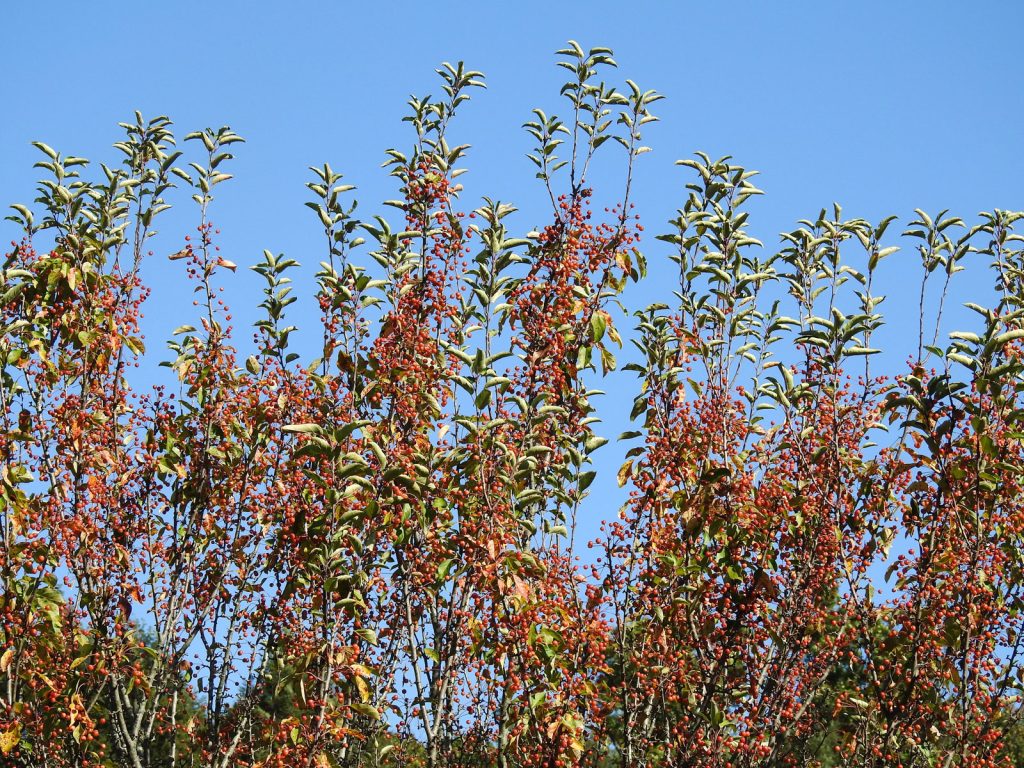Best Practices for Keeping Trees and Shrubs from Overtaking CRP Grasslands
One of the most common long-term threats to the health and integrity of Conservation Reserve Program (CRP) plantings is woody encroachment, the gradual invasion of trees and shrubs into grassland habitats. If left unmanaged, woody species can drastically alter the structure and function of native ecosystems, reduce biodiversity, and jeopardize CRP contract compliance.
At FDCE, we’ve helped landowners manage and restore more than 400,000 acres of native grasses and forbs, and we understand the critical role of proactive woody plant control in successful CRP management. This post explores why woody encroachment occurs, the risks it poses, and the most effective strategies for keeping it in check.
What Is Woody Encroachment?
Woody encroachment refers to the spread of trees, shrubs, and brush species, such as eastern redcedar, autumn olive, locust, sumac, and honeysuckle, into grasslands or open habitats. These species often establish gradually from nearby fencerows, forests, or unmanaged fields.
Why It Happens:
- Lack of disturbance (such as fire or mowing)
- Seed dispersal by wind, birds, and animals
- Inadequate mid-contract management
- Favorable weather conditions for woody seedling survival
Without regular intervention, small saplings can quickly establish root systems and become difficult, and costly, to remove.
Why It Matters for CRP Land
Woody encroachment doesn’t just change the appearance of a CRP field; it can compromise the ecological and contractual value of the land. Problems include:
- Reduced habitat quality for grassland birds and pollinators
- Increased shading, which suppresses native grasses and wildflowers
- Altered soil moisture and nutrient dynamics
- Potential non-compliance with NRCS and FSA guidelines, risking program benefits
- More intensive management needed later if not addressed early
FDCE’s Best Practices for Woody Plant Control
At FDCE, we offer full-service support for mid-contract management of CRP land, including tilling, spraying, and interseeding. Here’s how we recommend managing woody encroachment effectively:
1. Early Detection and Monitoring
Routine field inspections, especially along borders and fencerows, help identify saplings and brush before they become established. Spotting woody invasions early makes removal far easier and more affordable.
2. Mechanical Removal
Mowing and cutting are often the first steps in control. During dormant seasons, brush can be cut low to the ground using heavy-duty mowers or hand tools. For small infestations, mechanical removal may be sufficient.
- Tip: Avoid mowing during peak bird nesting seasons (typically May through July) unless necessary for compliance or control.
3. Targeted Herbicide Application
After cutting, regrowth from stumps or roots is common. FDCE applies site-specific herbicide treatments to prevent resprouting and ensure complete kill.
- Herbicides are selected based on species, timing, and CRP requirements.
- Our team handles all chemical components of your CRP management plan to ensure effectiveness and compliance.
4. Prescribed Burning
In regions where allowed, prescribed fire is one of the most effective long-term solutions for controlling woody growth. Fire naturally suppresses woody seedlings while promoting native grass vigor.
5. Mid-Contract Management (MCM) Planning
CRP contracts often require a mid-contract management activity in years 3 to 6. Controlling woody plants through mowing, spraying, followed by interseeding can fulfill this requirement while improving your field’s health.
FDCE provides technical and chemical component needs for MCM, ensuring landowners meet both ecological goals and program requirements.
Long-Term Prevention Tips
- Keep field borders clear and trimmed to reduce seed sources.
- Consider buffer zones and firebreaks to separate CRP plantings from wooded areas.
- Perform annual visual checks, especially in the spring and fall.
- Maintain a schedule for mowing, spot-spraying, or burning based on your conservation goals and contract guidelines.
Partner With FDCE to Protect Your CRP Grasslands
With over 400,000 acres of native grassland establishment and management experience, FDCE has the expertise, equipment, and team to help you prevent and control woody encroachment, whether you’re just starting a CRP contract or managing a mid-contract requirement.
Contact us today to learn more about our full-service CRP maintenance solutions and how we can help keep your CRP field thriving for years to come.

